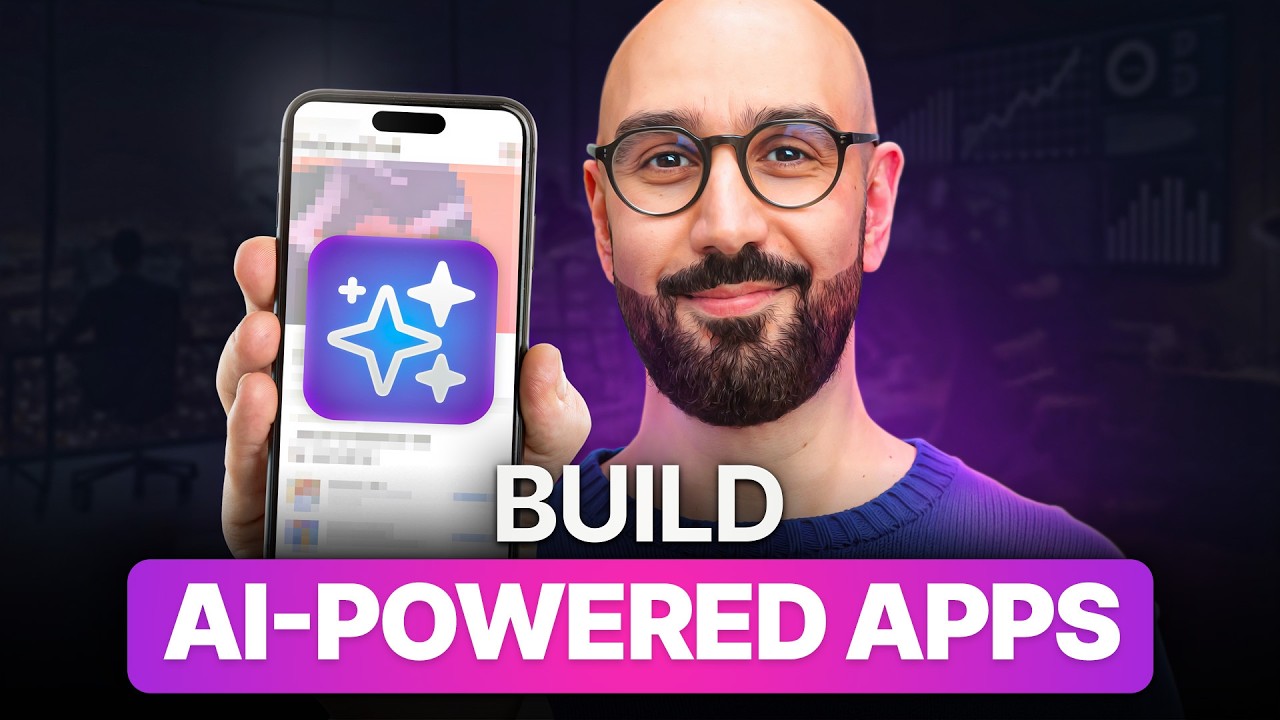The video introduces a comprehensive course that teaches developers how to build AI-powered applications using React and modern full-stack technologies, focusing on foundational AI concepts, clean architecture, and practical projects like chatbots and feedback analyzers. It emphasizes hands-on development with tools like Bun, Tailwind, and Prisma, guiding learners through building scalable, maintainable AI features without requiring prior AI experience.
The video presents a comprehensive course designed to teach developers how to build AI-powered applications using React and modern full-stack technologies. It begins by establishing a solid foundation in AI concepts, including understanding large language models (LLMs), tokens, context windows, model selection, and prompt engineering. The course is structured to guide learners through practical projects, starting with a chatbot for an imaginary theme park, followed by a customer feedback analyzer, and concluding with open-source AI model integrations. Throughout, the instructor emphasizes clean architecture principles, best practices, and the use of contemporary tools like Bun, Tailwind, Shatsen UI, Prisma, and Olama.
The course targets developers familiar with basic front-end development and React, but it does not require prior AI experience. It avoids quick-fix tutorials and instead focuses on building meaningful AI features that enhance user experience and functionality. The initial sections cover the theoretical underpinnings of language models, explaining their nature as statistical predictors trained on vast datasets, their limitations, and the importance of quality training data. The instructor also clarifies the role of AI engineers versus machine learning engineers, highlighting the practical application of pre-trained models in software development.
A significant portion of the course is dedicated to setting up a modern full-stack environment from scratch without relying on frameworks like Next.js, to maintain clarity between front-end and back-end interactions. The backend is built with Express and Bun, while the frontend uses React and Vite, with Tailwind CSS for styling and Shatsen UI for components. The course also covers essential development tools and practices, including environment variable management, API key security, code formatting with Prettier, and automated Git workflows using Husky and lint-staged, ensuring a professional and maintainable codebase.
The core project in the course is a chatbot that interacts with users by sending prompts to an AI model and returning responses. The backend API is developed step-by-step, incorporating input validation with Zod, error handling, and conversation state management using a repository-service-controller architecture. This layered approach separates concerns, making the codebase modular, scalable, and easier to maintain. The chatbot supports conversation memory by tracking conversation IDs and response IDs, demonstrating practical techniques for managing AI interactions in real-world applications.
Finally, the course transitions to building the frontend chatbot interface, connecting it seamlessly with the backend API. The instructor encourages active coding along with the lessons to deepen understanding. The video shared is a free two-hour preview of a more extensive seven-hour course, inviting viewers to enroll for a deeper dive into AI-powered app development. Overall, the course equips developers with the knowledge and skills to integrate AI features thoughtfully and effectively into their applications, preparing them for the evolving demands of the software industry.
